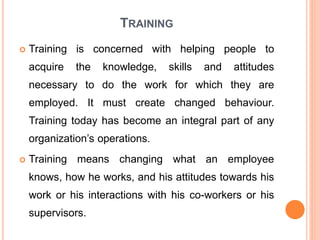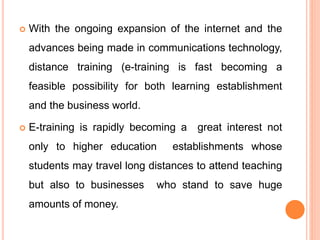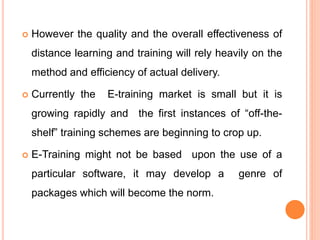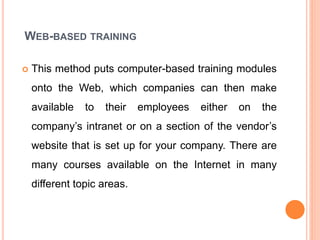The document discusses advanced training techniques, with a focus on e-training, which is becoming integral to organizational operations due to its flexibility, cost-effectiveness, and ability to deliver knowledge-based training. E-training incorporates various technologies, such as online courses and webinars, allowing companies to train employees across multiple locations efficiently while reducing costs associated with traditional training methods. While e-training has notable advantages, including improved productivity and up-to-date materials, it also presents challenges such as the need for computer literacy and potential issues with engagement in an impersonal format.























